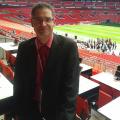
The Watford Observer has been publishing a picture from the archive of its friends at Watford Museum for the past two years, recalling so many aspects of life in the town in the past.
From shops and cinemas to views of roads that have often changed beyond recognition, we hope you are continuing to enjoy these images and they bring back some memories.
Pubs always provide a rich source of recollections and today we revisit five that we previously featured, together with the original captions kindly provided by the museum’s volunteer archivist Christine Orchard.
The Green Man

Christine said: “The Green Man was established around 1730. Daniel Podmore had the pub from around 1881 (his name was on the sign above the door) and the licence was transferred to Mrs Hannah Podmore in 1892.
“Like a number of pubs around the town, the Green Man wasn't just a place that served ale. A sign over the arch read: ‘Horses & Traps To Let or Hire, Good Stabling and Lock Up Coach Houses.
“Another interesting long panel at roof-level states that the pub was the ‘Head Quarters of the West Herts Bicycle Club’. The Watford Observer of 1882 mentions an annual meeting and club dinner held here. I assume when the club first formed they were riding Penny Farthing-style cycles with a front wheel larger than the rear.”
Old Berkeley Hunt

Christine said: “The Old Berkeley Hunt pub (or O.B.H.) was at the corner of St Albans Road and Weymouth Street which, today, puts it roughly in the middle of the town hall roundabout! The pub was built around 1869, and as a writer to the Watford Observer in 1870 noted, that it had ‘clustering around it about nine cottages’.
“The hunt after which the pub was named was said to have visited in its early years but been disappointed that it was just a beerhouse and did not have a licence to serve spirits.
“The pub continued until 1969 and in this 100-year period must have become a busy part of the community and seems to have been either a starting place or stop off for coach tours.”
Halfway House

Christine said: “The Halfway House was where Watford Road and Rickmansworth Road met at Cassio Bridge and the pub itself was situated between the Grand Union Canal and the River Gade.
"This photograph was taken at the beginning of the 1900s when the pub's landlord was Henry Colebrooke - he had been running the pub for at least ten years.
“Originally the pub must have served those travelling by boat and those working at the wharf as there were few private houses close by. However, by 1909, it appears that there were enough regulars to form a quoits team and host matches at the pub. I assume there was also a quoits league as results of the games were published in the Watford Observer.
“Sadly the pub was demolished when the road over the canal and river were widened in the 1960s.”
The Anchor

Christine said: “The Anchor was established in the Lower High Street by 1851. In the 1860s and 1870s it had become known as the Old Anchor and was run by William Keen who also provided lodging accommodation. Business must have been reasonably good as the Hit or Miss beer house was next door.
“Perhaps the area may have had some interesting aromas mixing with the beer, as on the other side of the Anchor was Payne's pork butchers shop.
“The Anchor was closed around 1957. The site, which is opposite Ausdens, is now a car dealer’s forecourt.”
The Kings Head

Christine said: “The Kings Head is believed to date back to the 1600s and appears to have been an inn rather than just a pub. It was located in the Market Place (where Specsavers are now) and was a good size.
“A letting notice in an 1869 newspaper, about ‘the well known Kings Head pub’, described that it ‘contains 15 rooms, well furnished’. Everything must have been quite newly decorated as the pub had been badly damaged when the Market Hall, just in front of the pub, had burnt down in 1853.
“The pub closed in the early 1960s and the site was redeveloped.”



Comments: Our rules
We want our comments to be a lively and valuable part of our community - a place where readers can debate and engage with the most important local issues. The ability to comment on our stories is a privilege, not a right, however, and that privilege may be withdrawn if it is abused or misused.
Please report any comments that break our rules.
Read the rules hereLast Updated:
Report this comment Cancel